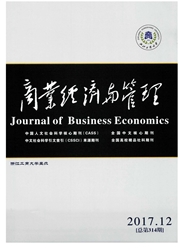

 中文摘要:
中文摘要:
新常态下,正确处理好稳增长与调结构的关系,有重要的政策含义。文章通过构建NAV、MLI两个不同的产业结构变动指数,基于省级1993-2013年的面板数据,运用GMM方法进行了实证检验。结果表明:从全国范围来看,短期内,产业结构变动与经济增长之间存在双向格兰杰因果关系,而较长时期内,仅存在经济增长到产业结构变动的单向格兰杰因果关系。其次,从省级层面来看,产业结构变动与经济增长之间的格兰杰因果关系表现出很大的异质性。基于此结论,文章认为,产业政策并不具有较长时期有效性,产业政策的制定需要视期限、地区的不同而择机、择时制定;同时,要规避产业政策缺陷带来的不足,规避"结构负利"的出现。
 英文摘要:
英文摘要:
Under the new normal condition, there is an important policy implication to appropriately handle the relationship between steady growth and structural adjustment. Two different industrial structure change indices of NAV and MLI are built in this paper based on the provincial-level panel data from 1993 to 2013 and they are verified through empirical test with GMM method. The results reveal that throughout the whole nation, in short term, there exists a two-way Granger causality relation between the industrial structure change and economic growth; in relatively long term, there exists only a single-way Granger causality relation from economic growth to industrial structure change. Moreover, from the provincial-level, great heterogeneity has been found in the Granger causality relation between industrial structure change and economic growth. Based on the conclusion above, it is argued in the paper that the industrial policies are not effective in long term and the formulation of the industrial policies is selected and decided depend on period of term, different regions, time and opportunities ; meanwhile, to avoid the deficiency caused by the defect of the industrial policies, efforts should be made to avoid the presence of "structural negative profit".
 同期刊论文项目
同期刊论文项目
 同项目期刊论文
同项目期刊论文
 期刊信息
期刊信息
